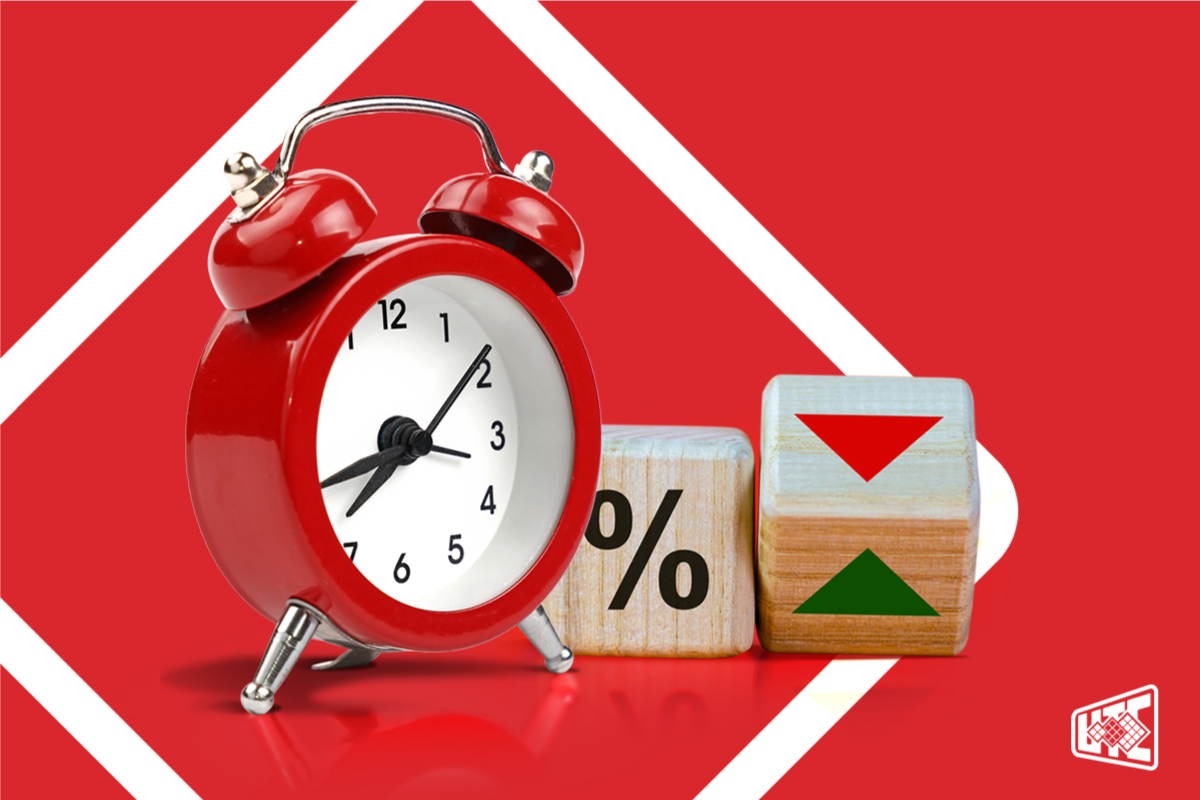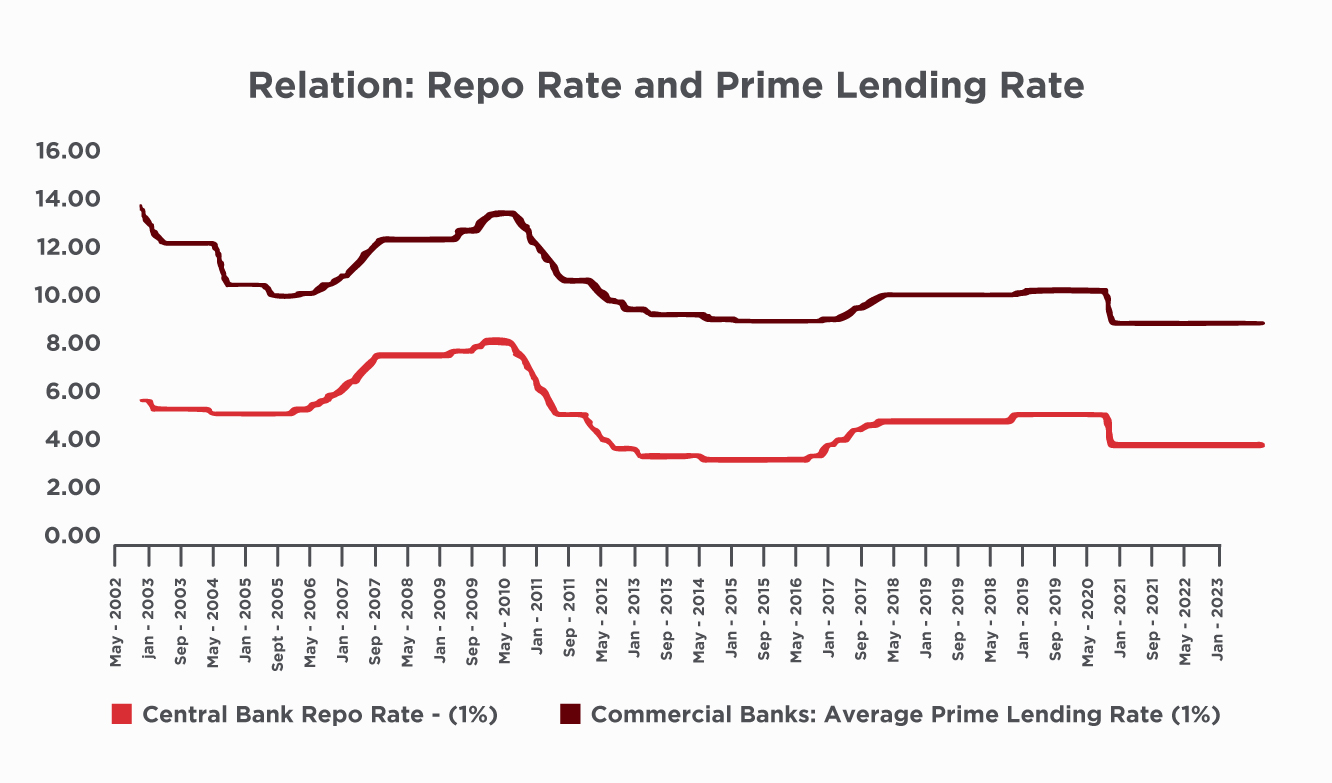
According to the local monetary policy authority, the Central Bank of Trinidad and Tobago (CBTT), the Repurchase rate or the “Repo” rate is the Central Bank’s key policy interest rate used to influence the level of commercial banks’ interest rates. Simply put, it is the rate at which the Central Bank lends money to commercial banks, usually for short-term periods, in the event that they are unable to meet a temporary liquidity shortage. In a repurchase agreement, the Central Bank provides cash to the commercial bank in exchange for a security. At a future date, the commercial bank repurchases the same security at a higher price. The rate at which the security is repurchased is known as the Repo rate.
How exactly does this rate affect you? Well, the Repo rate influences the interest rate at which commercial banks lend money to borrowers, sometimes called the loan rate. A standard measure of the loan rate is the prime lending rate. This rate is the interest rate that commercial banks charge customers who possess a high probability of paying back a loan. In other words, the prime lending rate is the rate offered to customers who the bank deems to be least risky in terms of potential default. As can be seen in the chart below, the prime lending rate is primarily determined by and mirrors the trajectory of the Repo rate that is set by the Central Bank.

Source: Central Bank of Trinidad and Tobago (CBTT)
How is the Repo rate determined?
The Central Bank’s Monetary Policy Committee (MPC) determines the Repo rate after performing a scan of the economic conditions on a local and international stage. The MPC meets every quarter or as needed to review economic indicators and evaluate the state of the economy. The MPC usually communicate monetary policy decisions on the Repo rate via the Monetary Policy Announcement on a quarterly basis. The next Monetary Policy Announcement is expected to be released on March 31st, 2023.
Certain factors such as the rate of inflation and the foreign exchange market influence decisions to change or keep the Repo rate unchanged. Overall, the determination of the Repo rate is a key tool in the Central Bank’s efforts to manage the economy and achieve its macroeconomic goals. Historically, in Trinidad and Tobago, the Repo rate was first introduced in May 2002 at 5.75 percent while today the Repo rate stands at 3.50 percent.
Impact of the RepoRate
Adjustments in the Repo rate have a significant impact on the economy and financial markets. Here are some effects of changes in the Repo rate:
Promotes economic growth: the Repo rate is used to manage access to funds in the banking system. When the Repo rate is reduced, it becomes cheaper for commercial banks to borrow money from the Central Bank, which can encourage them to lend more to businesses and consumers at a lower rate. This increased lending can help to stimulate economic growth.
Manage inflation: When the Repo rate is increased, it becomes more expensive for banks to borrow money from the Central Bank. This can lead to businesses and individuals paying higher interest rates for loans and can discourage borrowing due to higher loan rates, which usually leads to lower inflation and slower economic growth. Central banks typically use changes in the Repo rate to manage inflation, as lower interest rates can lead to higher inflation by encouraging spending and borrowing.
Exchange rates: Changes in the Repo rate can also have an impact on exchange rates. The difference in interest rates between two countries is a critical factor in determining the exchange rate between their currencies. A higher Repo rate leads to higher interest rates, and higher returns on investments in one country when compared to another country with lower interest rates. This can attract foreign investors to invest in that country’s financial assets. This condition leads to an increased demand for that country’s currency and hence increases a country’s exchange rate in comparison to another country.
Stock prices: Changes in the Repo rate can also affect stock prices. Higher interest rates can make borrowing more expensive for companies, which can negatively affect a company’s profits. Declining profits, in turn, can lead to investors lowering their expectations of company growth and therefore reduce their demand for a company stock which results in the decline of company stock prices. However, the relationship between the Repo rate and stock prices can be influenced by a variety of other factors. While an increase in the Repo rate can potentially lead to a decrease in stock prices, it is important to note that other factors, such as stock market conditions including the supply and demand of the company’s stocks, and company-specific factors such as dividend payments, can also play a role in determining stock prices.
Overall, moves in the Repo rate can have a significant impact on various aspects of the economy and financial markets. Central Banks must therefore carefully consider these effects when deciding whether to increase or decrease the Repo rate.
Historical Repo Rate action
The Repo rate peaked at 8.75 percent in September 2008 when inflation was around 14.8 percent. At that point in history, the continuing rise in food prices was the main reason for the sharp climb in inflation. The Repo rate remained at 8.75 percent until February 2009 when inflation began to show signs of easing and was registered at 11.7%.
The Repo rate was at its lowest level for almost two years from September 2012 to August 2014. At this time, the Central Bank indicated that the international economic environment was challenging and there was a need to support the recovery of the domestic economy therefore the Repo rate was reduced to 2.75%.
Currently, the Repo rate is at 3.50%, where it has been since the onset of the Covid-19 pandemic in March 2020. In the December 2022 Monetary Policy Announcement, the CBTT acknowledged the global uncertainty from the Russia-Ukraine war, which will continue into 2023 and lead to the instability of financial markets. Locally, CBTT did note that business operations are expected to rebound further and the state of rising inflation. The CBTT closed by announcing that it should be prepared to employ other monetary tools to address the inflation situation in a flexible manner.
To conclude, the repo rate is a critical instrument in the central bank’s arsenal of tools to regulate the economy and maintain macroeconomic stability. By adjusting the repo rate, Central Banks can influence the cost of borrowing, inflation, investment sentiment, and the pace of economic growth. It is important to note that changes in the repo rate can take time to have an impact on the economy.

